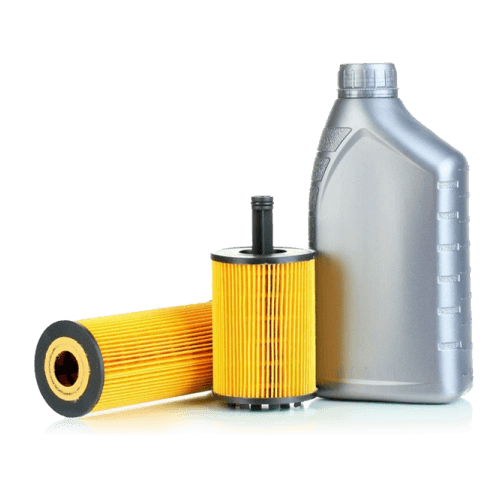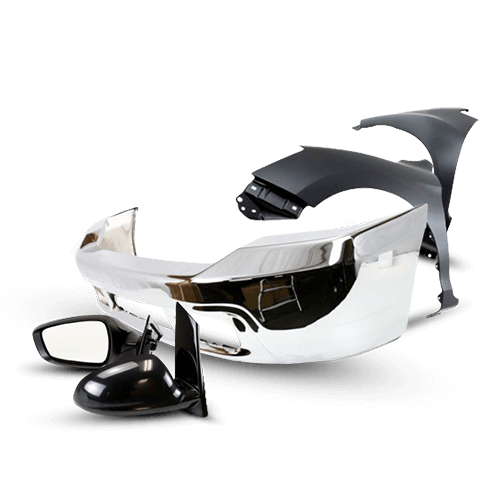
How to Lower Car Suspension? A Comprehensive Guide
Are you ready to take the performance and appearance of your car to the next level? Lowering your car's suspension can make all the difference. It not only gives your vehicle a more appealing appearance, but it can also significantly improve handling and the overall driving experience.
This comprehensive guide delves into the art of lowering car suspension, from the reasons for doing so to the step-by-step procedures. In this Best Part website article, we'll look at the reasons for lowering car suspension and answer the question, "How to Lower Car Suspension?"
What is the Reason for Lowering the Car Suspension System?
Before we get into how to lower car suspension, it's a good idea to go over the reasons and benefits of lowering the car's suspension system. Lowering the car suspension system involves reducing the distance between the chassis and the road. This modification serves multiple purposes:
- Improved Handling: A lower center of gravity improves cornering stability and responsiveness, making your car feel more planted on the road.
- Enhanced Aesthetics: Lowering the suspension can give your vehicle a more aggressive and streamlined appearance, boosting its visual appeal.
- Reduced Aerodynamic Drag: Lowering the car can reduce air resistance, resulting in better fuel efficiency and performance.
- Personalization: You can customize your car's stance and style by modifying its suspension, giving it a one-of-a-kind and personalized appearance.
Methods of Lowering Car Suspension
If you're a car enthusiast or simply want to improve the performance and appearance of your vehicle, you may have considered lowering the suspension. Lowering a vehicle's suspension has grown in popularity over the years due to the benefits it provides in terms of handling, appearance, and overall driving experience.
We'll get into the specifics of how to lower car suspension in the sections that follow. So, let's get started:
Coil-overs Or Coil Springs
Coil-overs and coil springs are popular ways to lower a vehicle's suspension. Coil-overs are adjustable units that combine shock absorbers and coil springs in one package. They allow you to fine-tune the ride height, damping, and stiffness to suit your preferences and driving conditions. Replacing stock coil springs with shorter ones, on the other hand, can achieve a similar effect, albeit with less adjustability.

Lowering Links
Lowering links, also known as drop links, are simple and inexpensive ways to lower a vehicle's suspension. These are the movable components that connect the suspension to the chassis. You can adjust your vehicle's ride height by adjusting the length of these links.
The Procedure for Lowering the Suspension System Using Coil Springs
- Gather Materials: Gather the necessary materials, including coil springs, a jack, jack stands, wrenches, and a spring compressor.
- First and foremost, safety: Place your vehicle on a level surface and apply the parking brake. Put on your safety equipment.
- Lift the Car: Use the jack to lift the car off the ground and secure it with jack stands.
- Remove Wheels: Remove the wheels to access the suspension components.
- Remove Old Springs: Use the spring compressor to safely remove the old springs.
- Install New Springs: Replace the old, shorter springs. Reassemble everything using the reverse procedure.

Air Suspension
An air suspension system is a type of suspension system in which an air spring or airbag is used instead of a metal spring (coil or leaf) to support the vehicle on the axles. These systems offer adjustable ride height and damping, allowing you to switch between comfort and sportiness at the touch of a button. As a result, the name air suspension system can also be included among the methods of lowering the car's height.
Hydraulic Cylinders
Hydraulic suspension systems use hydraulic cylinders to adjust the ride height. These systems offer precise control over the suspension's behavior and can provide an ultra-low stance when desired. However, they are often more intricate and may require professional installation.
Leaf Springs
Commonly found in trucks and older vehicles, leaf springs can also be adjusted to lower a car's suspension. This involves removing or modifying individual leafs in the spring pack to achieve the desired drop.

Lowering The Torsion Bar
Torsion bar suspensions are used in some vehicles and can be adjusted to lower the vehicle. To lower the ride height, the torsion bars are usually tightened. However, it is critical to maintain proper alignment and keep the suspension geometry within safe limits.
read more: what does suspension do for a car

Conclusion
Lowering your car's suspension is a modification that can significantly impact its performance, aesthetics, and handling characteristics. Whether you opt for coil-overs, air suspension, or other methods, it's essential to weigh the pros and cons, consider your driving habits, and prioritize safety. By following the right steps and, if necessary, seeking professional assistance, you can achieve the perfect stance and transform your driving experience. If you want to buy any of the parts related to car suspension, you can do so through the Best Part website.
FAQs
Will lowering my car's suspension affect its ride comfort?
- Lowering your vehicle can result in a firmer ride, but the extent of the effect is dependent on the method used and the adjustments made.
Can I install a lowering kit on my own?
- While some lowering kits can be installed by enthusiasts with mechanical know-how, it's often recommended to seek professional assistance for precise adjustments and proper installation.
Are there any drawbacks to lowering my car's suspension?
- Lowering your car can lead to reduced ground clearance, potentially causing issues when navigating speed bumps, driveways, and uneven terrain.
Can I switch back to the stock suspension if I'm not satisfied?
- In many cases, it's possible to revert to the stock suspension setup, but it's essential to consider the cost and effort involved.
Is camber adjustment necessary after lowering the suspension?
- Yes, lowering the suspension can alter the vehicle's camber, which may require adjustments to ensure even tire wear and optimal handling.
Can I use lowering methods to achieve a specific ride height?
- Yes, various methods allow you to precisely adjust your car's ride height, but it's important to follow guidelines to avoid compromising safety and performance.























































